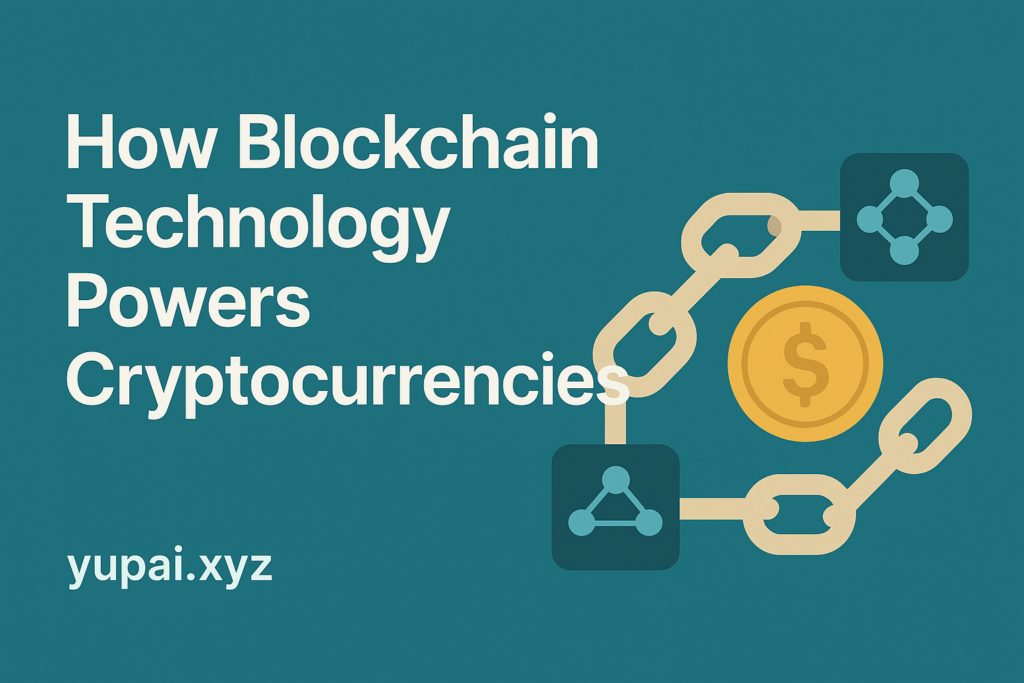
In today’s world, we rely heavily on banks and financial institutions to manage our money. Whether it’s getting a loan, saving money, or transferring funds, a middleman is almost always involved. But what if there was a system where you could manage your money entirely on your own, without the need for a bank or approval from anyone?
That’s exactly what DeFi, or Decentralized Finance, aims to do. It’s a new financial system built on blockchain technology that allows people to access financial services without traditional banks or institutions. DeFi is reshaping the global economy by offering open, permissionless, and borderless access to money.
DeFi works using smart contracts, which are self-executing pieces of code built mostly on the Ethereum blockchain. These contracts can automatically handle tasks like lending, borrowing, trading, and earning interest — all without requiring a third party. This removes the need for trust in a central authority, because the blockchain itself acts as the authority. If the code is secure, then the transaction is secure.
Let’s imagine you want to take a loan. Traditionally, you’d have to go to a bank, fill out forms, wait for approval, and accept the terms they give you. In DeFi, you can simply use a DeFi lending platform, lock some crypto as collateral, and borrow against it — often within minutes, and without anyone asking who you are. Similarly, if you have some crypto lying idle, you can lend it through a protocol and earn interest passively, just like a bank does with your money.
One of the biggest attractions of DeFi is financial freedom. Anyone with a smartphone and internet connection can access DeFi apps (called DApps) and use them to send money, save, borrow, or invest — even if they live in a country with limited banking infrastructure. There’s no need for a credit score, paperwork, or even identification.
Another powerful feature is transparency. Unlike traditional systems, where your money goes into a black box, DeFi operates fully on the blockchain. Every transaction, every smart contract, and every rule is visible to the public. That means no hidden fees or shady practices — if you know how to read the data, everything is right there in the open.
However, it’s important to know that DeFi isn’t perfect. The very fact that smart contracts are written by developers means that bugs or errors in code can sometimes be exploited, resulting in the loss of funds. Some DeFi projects have turned out to be scams or have had their liquidity “rug-pulled” — meaning the creators disappeared with users’ funds. Plus, the crypto market itself is extremely volatile, which adds a layer of risk to any investment or loan made within DeFi systems.
Still, despite the risks, DeFi is growing fast. Billions of dollars are locked in DeFi protocols as users around the world explore new ways to interact with money. Platforms like Uniswap allow users to swap cryptocurrencies instantly without the need for centralized exchanges. Services like Aave and Compound allow for lending and borrowing without banks. Wallets like MetaMask give users easy access to the DeFi ecosystem straight from their browser or mobile device.
In short, DeFi is turning the traditional financial system on its head. It’s giving power back to users, letting them be their own bank, and making financial tools available to anyone — not just the wealthy or well-connected. For beginners, it might seem confusing at first, but the potential is massive. As the technology matures and becomes easier to use, DeFi could very well become the future of money.
🌍 Why DeFi Matters
✅ 1. Full Control
You hold your funds — no need to trust a bank.
✅ 2. Open to Everyone
Anyone with an internet connection can access DeFi. No credit score needed.
✅ 3. Transparency
Everything is on the blockchain — visible, verifiable, and auditable.
✅ 4. High Earning Potential
You can earn interest, yield farm, or provide liquidity — often with higher returns than banks.
⚠️ Risks of DeFi
DeFi is exciting, but not without risks:
- Smart Contract Bugs: If the code has an error, funds can be lost.
- Scams and Rug Pulls: Not all projects are safe.
- Volatility: Crypto prices can rise or fall fast.
Always DYOR — Do Your Own Research — before investing.
🧠 Real-Life Example
Suppose you have $1,000 worth of Ethereum. With DeFi, you can:
- Deposit it into Aave
- Earn 5–10% interest
- Withdraw anytime — no bank needed
It’s like putting your money to work in a digital economy.
✅ Final Thoughts
DeFi is more than a trend — it’s a revolution in how we access and use financial services. While it’s still new and evolving, it opens up a world where you’re in control.